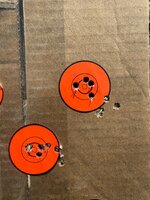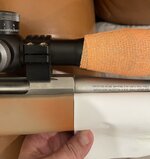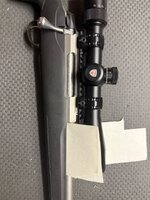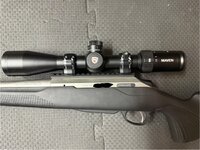Geysermutt
FNG
- Joined
- Feb 12, 2025
- Messages
- 18
So I’ve been working to dial in my new rifle setup and I’ve run into an interesting situation.
The setup is a tikka lite stainless 6.5 cm in a factory stock that is bored out to free float the barrel. It has a mavin rs 1.2 with zeiss ultralight scope rings on a picatinny rail.
What I’m running into is that after I’ve zeroed the gun I can tap(almost slam) the forend into the front sand bag which causes the next round to hit 1.5” right, and sometimes 1.5” low. After 1 to 2 more shots the rounds will work their way back to zero. I can repeat this every time.
After I found this out I pulled the scope off and re-cleaned all the threads. I then degreased everything and re-mounted the base to rifle(45in-lbs), the rings to base(65in-lbs), the rings to scope(25in-lbs), and the action screws (65in-lbs). I even played with higher and lower torque numbers for the actions screws and was still having this repeatable issue.
My gut tells me it’s a bedding issue but I was wondering if anyone has had something like this before, and what the solution was.
The setup is a tikka lite stainless 6.5 cm in a factory stock that is bored out to free float the barrel. It has a mavin rs 1.2 with zeiss ultralight scope rings on a picatinny rail.
What I’m running into is that after I’ve zeroed the gun I can tap(almost slam) the forend into the front sand bag which causes the next round to hit 1.5” right, and sometimes 1.5” low. After 1 to 2 more shots the rounds will work their way back to zero. I can repeat this every time.
After I found this out I pulled the scope off and re-cleaned all the threads. I then degreased everything and re-mounted the base to rifle(45in-lbs), the rings to base(65in-lbs), the rings to scope(25in-lbs), and the action screws (65in-lbs). I even played with higher and lower torque numbers for the actions screws and was still having this repeatable issue.
My gut tells me it’s a bedding issue but I was wondering if anyone has had something like this before, and what the solution was.




